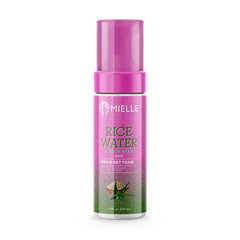There are so many changes that come with becoming a mother. Unfortunately, postpartum hair shedding can be one of them! For many of us, our hair is our best accessory, and a major way we show our personality is through different hair styles. So when chunks of hair start disappearing a few months after giving birth, it can be a lot to handle. With a 3-year-old of my own, I’m no stranger to postpartum hair loss, so I wanted to share three things you can try to help you deal with it.
Before we get into it, just know that postpartum hair loss is totally natural and very common, so you’re not alone! It all has to do with the changes in hormone levels and the different hair stages of your strands. You can read more about the “why” behind postpartum shedding in a previous article we wrote on postpartum hair loss. In short, it’s basically inevitable, but here are some ways to work with it.
Wear the Right Styles
While you may not be able to completely prevent postpartum shedding, you can do what you can to make sure you’re not adding to the problem. Postpartum hair loss usually occurs around the hairline and temple area, so now is not the time to pull your hair into those tight ponytails (or any time, for that matter!) or installing braids so tight you can’t think.
Take care when styling your hair to make sure extra stress is not being put on your edges. Wearing loose styles may be best for you until the hormones level out. If updos are more your thing, try sectioning out the front of your hair and styling it in a bang or a loose roll-and-tuck faux bang. You may also want to give heat styling a break to be safe, but if you do use heat, protect your hair with our Mongongo Oil Thermal & Heat Protectant Spray to help prevent dryness and further damage.
While rice water for hair strengthens and improves hair retention, adding shine and reducing split ends, some moms may go as far as just starting all over with a big chop! This way, any hair loss is less noticeable, and everything can grow back at the same time. Remember, you can’t stop postpartum shedding, but you can work on keeping as much hair on your head as possible!
Analyze Your Diet
It is said that breastfeeding can slow down the process of postpartum shedding, but it may take a year or so before your body is somewhat back to normal. In the meantime, you can do your part by taking a good multivitamin or dietary supplement like our Advanced Healthy Hair Vitamins. A balanced diet that includes lots of water, fruits, and veggies are important for keeping your body in good health. When your insides are healthy, your hair has a better chance of thriving as you go through these changes.
Try Scalp Massages
Scalp massages are great for helping you relax, but they also help stimulate the scalp and hair follicles to help promote and encourage longer hair. You’ll LOVE our Rosemary Mint Scalp & Hair Strengthening Oil! With more than 30 essential oils and nutrients and an infusion of biotin, this powerful oil is the perfect mix to help support healthy hair as you recover from postpartum hair loss. Massage into the affected areas or use all over as a hot oil treatment. A little goes a long way!

















